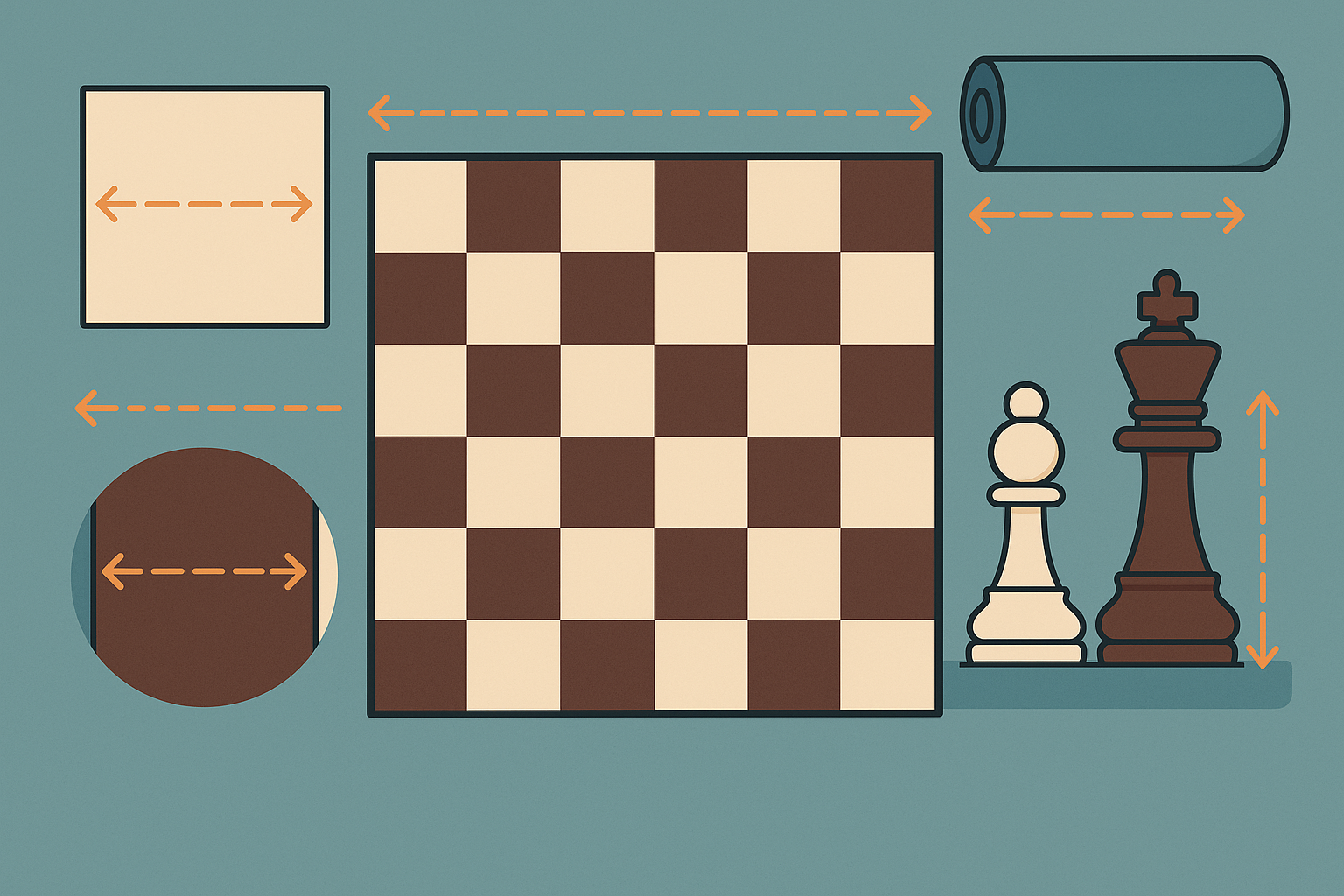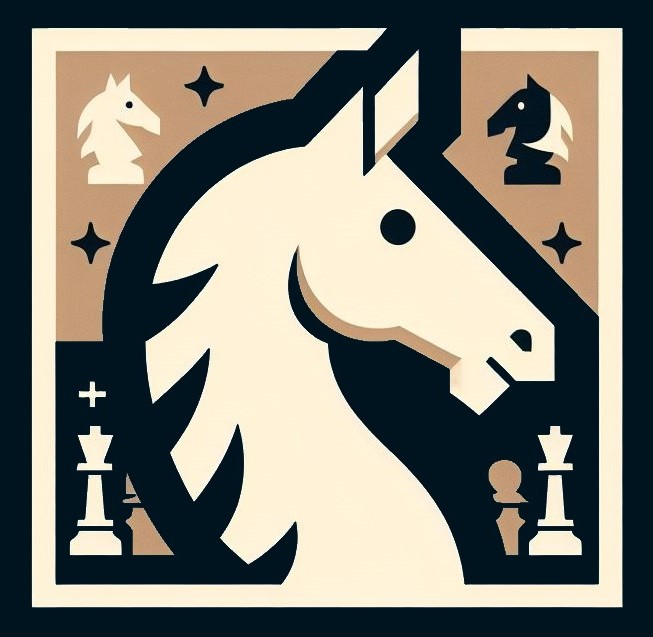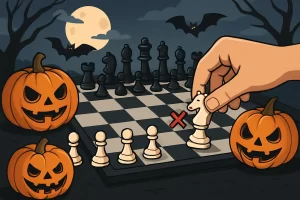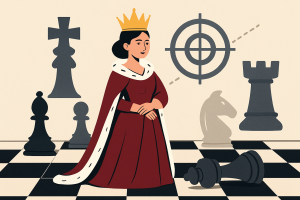Call us now:

Standard tournament boards use 2.25 inch squares (≈57 mm) with a 3.75 inch king (≈95 mm). The playing field is 8×8 squares; at 2.25′ per square it measures 18′ across. Add a 1–2′ border per side and the total board width lands around 20–22′ (51–56 cm). In metric-first regions, 55 mm squares with a 95 mm king is the most common pairing.
Here’s the short, snippet-ready answer you can quote:
The standard tournament chess board has 2.25 inch (≈57 mm) squares. For most Staunton sets with a 3.75 inch (≈95 mm) king, choose 2.25′ or 55–57 mm squares so the king’s base occupies about 75–80% of the square. The playing field is 18′ with 2.25′ squares; add a 1–2′ border per side for a total width of roughly 20–22′ (51–56 cm).
Why this matters:
The right dimensions don’t just look tidy—they make the board comfortable to play on, prevent pieces from crowding, and keep your hand and eye from tripping over cramped diagonals. I’ve watched grandmasters refuse a charming vintage set because the bases skated into the files, and I’ve seen club players suddenly drop a time scramble because a swollen border pinned the clock too far away. Good sizing is part design, part ergonomics, and a touch of ritual.
A fast conversion list for common sizes:
- 2′ squares ≈ 50.8 mm
- 2.125′ squares ≈ 54 mm
- 2.25′ squares ≈ 57.15 mm
- 55 mm squares ≈ 2.165′
- 57 mm squares ≈ 2.244′
- 3.5′ king ≈ 89 mm
- 3.75′ king ≈ 95 mm
- 4′ king ≈ 102 mm
The anatomy of a chessboard
Every board is an 8×8 grid—64 light and dark squares—with a border around the playing field. Most makers talk about four dimensions:
- Square size: edge-to-edge of a single square.
- Playing field: 8×the square size (no borders).
- Border/margin: the frame around the 8×8 grid; sometimes with printed notation.
- Thickness: the depth of the board. On wood it affects warping resistance and weight; on roll-up mats it affects how flat the board lies.
Other details pros notice:
- Bevel: a softened outer edge reduces chipping and feels better when you slide a scorebook or your wrist along the table.
- Inlay vs. print: higher-end wooden boards use veneer inlays; travel boards often print or emboss the pattern.
- Notation: coordinates a–h and 1–8 printed or engraved on the border.
- Weight: heft keeps the board planted; too light and a careless elbow lifts a corner.
Official chessboard size: what the rulebooks mean in real life
Tournament chess coalesced around two standards:
- Metric/FIDE preference: 50–60 mm squares are allowed; 55 mm is commonplace at high-level events, paired with a 95 mm king.
- US club/tournament standard: 2.25′ squares with a 3.75′ king.
Both are correct within their ecosystems. The range exists because chess pieces vary by design and base diameter. Boards are designed for the pieces, not the other way around. That’s why you’ll hear experienced arbiters say, “Match the base, not the height.” The height gets all the attention, but the base is what actually meets the square.
The 75–80% base-to-square rule, explained simply
If you remember only one rule, make it this:
The king’s base should be about 75–80% of the square size.
Why? The king is the widest piece. If its base eats more than 80% of the square, files look crowded and captures feel clumsy. If it uses much less than 70–75%, the board looks sparse, and pieces slide too freely into each other’s “air space” when clustered.
Quick example:
- If your king’s base is 1.75′ (≈44.5 mm), choose squares around 2.25′ (≈57 mm). 1.75 ÷ 2.25 ≈ 0.78, which sits snugly in the 75–80% band.
If you don’t know your base diameter, estimate it as 40–45% of the king’s height for standard Staunton designs, then use the 75–80% rule.
Piece-to-board matching guide (practical, not theoretical)
Below is a field-tested pairing guide. These are the matches you actually see on tournament floors, club nights, and in serious home setups. Heights, bases, and square sizes vary by maker, but these recommendations keep you inside the comfort zone.
| King Height | Typical King Base | Recommended Square Size | Common Use |
|---|---|---|---|
| 3.25′ (≈83 mm) | 1.45–1.55′ (37–39 mm) | 2.0′ (≈51 mm) or 2.125′ (≈54 mm) | Compact home/analysis, smaller tables |
| 3.5′ (≈89 mm) | 1.55–1.65′ (39–42 mm) | 2.125′ (≈54 mm) or 55 mm | Club/home, analysis boards with a little breathing room |
| 3.75′ (≈95 mm) | 1.65–1.85′ (42–47 mm) | 2.25′ (≈57 mm) or 55–57 mm | Standard tournament/club, most Staunton sets |
| 4.0′ (≈102 mm) | 1.8–2.0′ (46–51 mm) | 2.375–2.5′ (≈60–64 mm) | Large display boards, exhibition, spacious tables |
| 2.5–3.0′ travel kings (≈64–76 mm) | 1.0–1.3′ (25–33 mm) | 1.5–1.75′ (≈38–44 mm) | Travel/magnetic/folding sets |
| Giant outdoor 16–25′ kings (≈40–64 cm) | 6–10′ (≈15–25 cm) | 8–14′ squares (≈20–36 cm) | Garden/chess plaza |
“Which board for a 3.75′ king?” Use 2.25′ (≈57 mm) or 55–57 mm squares. That’s the answer you’ll hear from arbiters, coaches, and long-time tournament directors alike.
Square size vs overall board width (with borders and thickness)
The part most articles skip is the total footprint. You don’t play only on the 64 squares—you play on the board as a whole, and it has to fit on a table with a clock, notation sheet, water, and two restless elbows.
Use these rules of thumb:
- Playing field width = 8 × square size.
- Border width per side = 1–2′ (≈25–50 mm) for wood; 1–1.75′ (≈25–45 mm) for vinyl and silicone. Notation needs roughly 0.6–0.8′ (15–20 mm) of that.
- Total board width = playing field width + 2 × border.
Typical ranges by square size:
| Square Size | Playing Field | Border per Side | Total Width | Typical Thickness | Typical Weight |
|---|---|---|---|---|---|
| 2.0′ (≈51 mm) | 16′ (≈40.6 cm) | 1–1.5′ (≈25–38 mm) | 18–19′ (≈46–48 cm) | 0.5–1.0′ (≈13–25 mm) wood; 1–2 mm vinyl/silicone | 3–7 lb wood; 0.5–1 lb vinyl |
| 2.125′ (≈54 mm) | 17′ (≈43.2 cm) | 1–1.5′ (≈25–38 mm) | 19–20′ (≈48–51 cm) | same ranges | 4–8 lb wood |
| 2.25′ (≈57 mm) | 18′ (≈45.7 cm) | 1–2′ (≈25–50 mm) | 20–22′ (≈51–56 cm) | 0.6–1.25′ (≈15–32 mm) wood; 2–3 mm silicone | 5–10 lb wood; ~1 lb vinyl/silicone |
| 55 mm | 440 mm (≈17.32′) | 25–45 mm | 490–530 mm (≈19.3–20.9′) | 15–30 mm wood; 2–3 mm silicone | similar to above |
| 57 mm | 456 mm (≈17.95′) | 25–50 mm | 506–556 mm (≈19.9–21.9′) | similar to above | similar to above |
You’ll see variance: boutique makers love wide borders for visual drama; vinyl organizers keep borders tight so more boards fit on narrow tables. The sweet spot for a home wooden board is a 1.5′ (≈38 mm) border with a light bevel—easy to grip, big enough for notation, but not so thick it hogs the clock space.
What about thickness?
- Veneered wooden boards: 0.5–0.75′ (≈13–19 mm). Good balance of weight and stability.
- Solid-wood or framed boards: 0.75–1.25′ (≈19–32 mm). Heavier, more resistant to warping, substantial feel.
- Roll-up vinyl: around 1 mm. Portable, very forgiving, lies flat after a few minutes.
- Silicone: 2–3 mm, grippy, washable, rolls without creasing.
- Electronic/DGT-style: often around 0.8–1.2′ (≈20–30 mm) due to sensor housing and wiring channels.
Special cases and how measurements shift
Beginners and home players
You don’t need the exact tournament size, but you do need comfort. A 2.125′ or 55 mm board paired with a 3.5–3.75′ king is forgiving for smaller tables. If your dining table is tight, 2.0′ squares with a 3.5′ king still feel “real” without sprawling. Look for at least a 1′ border so you can add adhesive ranks/files or slip a small coordinate card under the frame.
Kids chess board size
Two priorities matter: pieces shouldn’t be so heavy they tumble and not so tiny they feel toy-like. For school clubs, I like 2.0–2.125′ squares and 3.25–3.5′ kings. Kids’ hands fit the pieces, they see diagonals clearly, and the whole kit fits in a backpack. Weight matters more than thickness: light plastic pieces with a bit of weight in the base and a silicone mat are ideal for durability.
Analysis boards
- Desk size: 2.0′ squares with a 3.5′ king is ideal. You can keep an open book beside it.
- Side table size: 1.75–2.0′ squares if your space is truly tight. For reference, a 1.75′ board is just 14′ across, plus a border.
- Coaches’ travel kits: 20′ vinyl boards with 2.25′ squares are common because everyone recognizes the geometry, and demo pieces fit expectations.
Travel, folding, and magnetic sets
- Folding wood: common squares are 1.75–2.0′; kings 3.25–3.5′.
- Magnetic: 30–40 mm squares with 70–90 mm kings; bases are narrow to accommodate magnets, so the 75–80% rule is more lenient here.
- Pocket sets: as small as 15–25 mm squares; these are for study, not speed play.
Vinyl roll-up boards
The workhorse of clubs and tournaments. Most have 2.25′ squares on a 20′ or 20.5′ mat with roughly 1’–1.25′ borders, sometimes printed with coordinates. Silicone alternatives offer similar dimensions with a grippier surface and zero memory (they don’t crease).
Electronic and DGT-style boards
DGT wooden tournament boards typically use 55 mm squares. The playing field is 440 mm; with borders, total width is roughly 490–540 mm depending on the specific frame. Plastic-laminate e-boards follow the same square size with thinner frames. Electronic boards must allow room for connector ports and internal electronics, so borders are designed not just for looks but for housing components. If you intend to use your own pieces on a DGT or similar board, match base diameter carefully: 40–46 mm bases work best on 55 mm squares.
Giant outdoor sets
Expect kings from 16′ up to 25′ and squares from 8–14′. The same 75–80% logic applies, but grass introduces friction. A 10′ base on a 12–14′ square feels comfortable outdoors; in plazas with tile, 10–12′ squares keep walking paths open. Remember to include a 12–24′ free perimeter beyond the playing field if you’re installing a permanent board.
The 2.25′ vs 2′ debate (and 55 mm vs 57 mm)
Club players argue about this at least as often as they discuss the Najdorf. Here’s the reality:
- 2.25′ squares (≈57 mm) are the US tournament staple. They look and feel right with a 3.75′ king and typical base.
- 55 mm squares are the go-to metric tournament size and match the same 95 mm king. Many electronic boards are 55 mm; international events prefer this.
- 2.0′ squares are excellent for home and analysis, especially if your table is narrow.
- 57 mm vs 55 mm is less about right vs wrong and more about context. If your pieces have a broad base, 57 mm keeps files airy; if they’re moderate, 55 mm looks refined.
What size for 3.75′ and 4′ kings?
What size chess board for a 3.75 inch king:
- Use 2.25′ (≈57 mm) or 55–57 mm squares. Aim for a king base around 1.7–1.85′.
What size chess board for a 4 inch king:
- Use 2.375–2.5′ (≈60–64 mm) squares. These are display-sized boards and need a large table. Many 4′ kings have bases that push over 1.9′, which makes 60+ mm squares necessary.
A simple piece-to-square calculator you can implement or use on paper
If you know king base diameter:
- Recommended square size = base ÷ 0.75 to ÷ 0.80.
- Example: base 44 mm → 44 ÷ 0.78 ≈ 56.4 mm. Choose 55–57 mm squares.
If you only know king height:
- Estimate base as 0.42 × king height (Staunton average).
- Then square = base ÷ 0.78 (middle of the 75–80% band).
- Example: king 95 mm → base ≈ 0.42 × 95 ≈ 39.9 mm. Square ≈ 39.9 ÷ 0.78 ≈ 51.2 mm. Now adjust up because modern tournament bases trend wider than 42% on many sets. That’s why a real-world 95 mm king typically pairs with 55–57 mm squares. If your set’s bases are wider (common for weighted sets), the calculator’s first method (using actual base) is the one to trust.
DIY: chess board dimensions for woodworking
You don’t need exotic tools to build a board that looks professional. What you do need is a plan for square size, borders, thickness, and wood movement.
Core specs to decide:
- Square size: pick 2.0′, 2.125′, 2.25′, 55 mm, or 57 mm.
- Border width per side: 1–1.5′ for compact elegance; 1.75–2′ for presence and notation.
- Overall size: playing field + borders.
- Thickness: 0.75′ is a safe, rigid standard for a veneered panel; go thicker for solid frames.
- Species: a classic look pairs maple (light) with walnut (dark). You can swap maple for birch/beech, walnut for wenge/ebony-stain.
- Finish: an oil/varnish blend gives a soft sheen that won’t glare under lights; matte lacquer keeps fingerprints at bay.
Total board size examples
Make a chess board with 2 inch squares:
- Playing field: 16′.
- Border per side: 1.5′.
- Total width: 19′.
- Thickness: 0.75′ veneered panel on MDF or Baltic birch core for stability.
- Weight: around 6–8 lb in hardwood with frame.
Make a board with 2.25 inch squares:
- Playing field: 18′.
- Border per side: 1.5–2′.
- Total width: 21–22′.
- Thickness: 0.75–1.0′ for veneered/inlaid; up to 1.25′ for a framed solid look.
Make a board with 55 mm squares:
- Playing field: 440 mm.
- Border per side: 35–45 mm.
- Total width: 510–530 mm.
- Thickness: 18–25 mm.
How wide should the chess board border be?
- Minimum: 1′ per side (≈25 mm). Fits notation but looks tight on large tables.
- Sweet spot: 1.25–1.75′ (≈32–45 mm). Balanced visually, enough space for notation and a gentle bevel.
- Showcase: 2′ (≈50 mm) or more. Dramatic, great for display pieces; ensure your table can accommodate the extra footprint.
Thickness and construction tips
- Use a stable core: MDF or Baltic birch under veneer resists cupping.
- Keep dark and light veneers equal thickness so the board moves evenly with humidity.
- If you build solid-wood strips, alternate grain orientation and clamp with cauls.
- Bevel the underside very slightly; it reduces perceived bulk and helps fingers lift the board.
- End-grain boards look spectacular but are prone to movement; face-grain or veneer is safer for long-term flatness.
Finishing
- Sand to 180–220 grit. Break sharp edges.
- Consider a pore-filling step on open-grain species (walnut, oak) for a glassy look.
- Two to three coats of oil/varnish blend, or a waterborne matte lacquer for less yellowing.
- Avoid high-gloss; glare is fatiguing over long games.
Checkerboard dimensions for woodworking
For those searching “checkerboard dimensions woodworking,” the same geometry applies: choose a square size (often 1.5–2′), calculate the playing field (8×the square), and add a border proportionate to the piece size. Checkers typically have wider bases relative to their height, so err toward slightly larger squares if you intend the board to be dual-use.
Choosing materials by type: what changes in the numbers
Wooden chess board dimensions
- Best overall feel and weight.
- Consider 2.25′ or 55 mm as defaults, 1.5′ border, 0.75–1.0′ thick panel.
- Veneered inlay looks clean and resists movement; solid-frame edges let you shape a handsome bevel.
Vinyl roll-up chess board size
- Common: 20′ mat with 2.25′ squares and 1–1.25′ borders.
- Thickness ~1 mm, weight about a pound.
- Rolls into a tube; survives backpacks and rains that would terrify walnut.
Silicone boards
2 mm or so, sit perfectly flat, zero memory.
Great for kids and club kits—easy to wash, rugged, quiet to the touch.
Folding boards
- Dimensions depend on hinge and cavity for piece storage.
- Typical 2.0′ squares; leaves enough internal depth for weighted pieces.
Magnetic boards
- The magnet thickness determines how thick the board can be without sacrificing hold.
- Squares 30–40 mm; kings around 70–90 mm.
Electronic/DGT boards
- 55 mm squares by design.
- If you want your own pieces to register reliably, choose sets known to be e-board compatible or check that base diameters sit comfortably on 55 mm.
Chess tables: dimensions and clearances
A good chess table is a little orchestra pit—space for the board, the clock, and the inevitable coffee cup someone swears won’t spill.
- Table height: around standard dining height. You want forearms parallel to the floor when your hands hover over the fourth rank.
- Tabletop size for a tournament board: at least 24′ deep to host a 20–22′ board and a clock behind it. Width around 30–36′ gives two players comfortable elbow room.
- Inset boards: if you’re building a table with a recessed board, design the cavity for your specific board’s total width and add a 1/8–1/4′ tolerance so fingers can lift it. Make sure the recess leaves border notation visible if you use it.
Do I need notation on a chessboard?
Required? No. Useful? Extremely. Printed coordinates help beginners learn and help everyone record moves without mistakes. Many tournament organizers favor boards with notation because it speeds corrections during disputes and lets coaches cue squares quickly. If your favorite board lacks notation, a slim coordinate strip tucked under the border works fine.
Matching pieces to boards: a closer look at bases
The secret handshake of board sizing is the base diameter. Here’s a quick reference for common Staunton sets:
- 3.25′ king: base around 1.45–1.55′.
- 3.5′ king: base around 1.55–1.65′.
- 3.75′ king: base around 1.65–1.85′.
- 4.0′ king: base around 1.8–2.0′.
Within each height, some designs run “broad,” which is common for tournament-weighted sets where stability trumps minimalism. That’s why a 3.75′ king can demand anything from 2.125′ to 2.375′ squares. In practice, most 3.75′ sets pair beautifully with 2.25′.
A few pieces affect the fit beyond the king:
- Queens often share or exceed the king’s base width by a hair; be sure they don’t jam diagonally on too-small squares.
- Knights with lush manes and deep bases look crowded sooner than streamlined knights.
- Bishops with wide collars (miters) can create visual crowding even when bases fit within 80%—another reason many arbiters lean to 57 mm over 55 mm if the set runs broad.
Regional and language variants (metric-first quick help)
If you’re searching in other languages or metric formats, these phrases will find the same answers:
- standard chess board size cm (tamaño tablero de ajedrez; dimensione scacchiera; Maße Schachbrett; taille échiquier standard)
- chess board size mm (maß in mm; misura in mm; taille en mm)
Metric quick references:
- Standard tournament: 55–57 mm squares, 95 mm king.
- Board total width with 55 mm squares: playing field 440 mm; plus 25–50 mm border per side → roughly 490–540 mm total.
- For a 4′ (≈102 mm) king: consider 60–64 mm squares, total board width ≈ 520–560 mm plus borders → plan for ~600–680 mm overall if borders are generous.
A worked example: buying or building with 3.75′ pieces
Here’s how a director or coach decides quickly.
- Measure the king base: say it’s 1.78′ (≈45 mm).
- Choose a square using the rule: 1.78 ÷ 0.78 ≈ 2.28′ (≈58 mm).
- Available boards near 58 mm are 2.25′ (57 mm) and 57 mm. Either works. Prefer 2.25′ if the set looks broad. Prefer 55 mm only if the bases are a hair under 1.7′ or you need to save table space.
A buying shortcut if you can’t measure:
- If the king is 3.75′ and looks stout, pick 2.25′ squares.
- If it’s 3.5′, pick 2.125′ or 55 mm.
- If it’s 4′, pick 60–64 mm.
Do square size differences really matter? Yes—and not just for looks
Players develop a rhythm around the board. On larger squares, your hand gives pieces more of a “landing strip,” which helps in speed time controls. On smaller squares, clusters get crowded in blocked positions (think Spanish structures or French fortresses). I’ve watched blitz aficionados seek out wider squares on club night just to feel the room for those rook lifts to the third rank. Conversely, on a tight coffee shop table, 2.0′ squares preserve cappuccino real estate and keep your clock from teetering on the edge.
DGT boards and tournament realities
If you plan to broadcast games or use electronic recording, 55 mm is the safe bet. Electronic boards have their own frame geometry and need space for cables or integrated clocks. They also use piece recognition or sensor activation; base diameter and contact consistency matter. While most tournament-weighted pieces work, some ornate bases can underperform with sensors. Stick to Staunton profiles known to be “e-board friendly” if you plan frequent electronic use.
Outdoor and public-space boards: a quick dimension plan
- Kings 16–20′: choose 10–12′ squares; total field 80–96′. Add at least 12′ buffer on each side.
- Kings 20–25′: choose 12–14′ squares; total field 96–112′. Add 18–24′ buffer.
- Materials: pavers, composite tiles, or interlocking mats. If you use stone, consider glare; matte pavers are kinder to eyes in bright light.
An image you should include in your article or printout
A single annotated diagram helps more than a thousand words:
- Show an 8×8 board with square size labeled.
- Mark playing field width, border width per side, and total board width.
- Include a king base drawn to scale on one square with “base ≈ 75–80% of square” annotation.
Alt text suggestion: “Chess board dimensions in inches and cm showing square size, borders, and total width.”
FAQ: clear, short answers to the questions people actually ask
- What is the official size of a chess board?
- Tournaments typically use 2.25′ squares (≈57 mm) in the US and 55 mm squares elsewhere, paired with a 3.75′ (≈95 mm) king. Rules allow a range around 50–60 mm; 55–57 mm is the sweet spot.
- How big should chess squares be?
- For standard play with Staunton pieces, 2.25′ (≈57 mm) or 55 mm. For smaller sets or tight tables, 2.0–2.125′ (≈51–54 mm) works. Use the 75–80% rule: king base is about three-quarters of the square.
- What size board for a 3.75′ king?
- 2.25′ squares (≈57 mm) or 55–57 mm.
- What is the standard chess board in cm?
- A common tournament board has 55 mm squares (playing field 44 cm). With borders it’s roughly 49–54 cm wide depending on the frame.
- How thick is a chess board?
- Wood boards: about 0.5–1.25′ (≈13–32 mm). Vinyl: around 1 mm. Silicone: around 2–3 mm. Electronic boards: often near 20–30 mm.
- Does 2′ or 2.25′ square size matter?
- Yes. 2.25′ feels roomier and is the US tournament norm; 2.0′ is compact for home and analysis. Both are fine if your pieces match the 75–80% base rule.
- What board size matches a 95 mm king?
- 55–57 mm squares. That’s the classic 3.75′ pairing.
- Do I need notation on a chessboard?
- Not required, but strongly recommended for learning and recording. Many club and scholastic boards include it.
- What size chess board for a 4′ king?
- 60–64 mm squares. These are larger display or spacious-home boards.
- What’s the difference between 55 mm and 57 mm boards?
- A modest visual and ergonomic change. 57 mm gives broader files for wider bases and US-styled sets; 55 mm is common with electronic boards and international events.
- How wide should the chess board border be?
- 1–1.5′ per side for most boards; 1.75–2′ for dramatic frames or when you want large, readable notation.
- Is a heavy board better?
- Heavier boards stay planted and feel premium. For travel or scholastic use, lighter (vinyl/silicone) wins on durability and portability.
A quick-reference matrix: choose by need
- Tournament: 2.25′ or 55 mm squares; 3.75′ king; border 1–1.5′; thickness ~0.75–1′.
- Club kit: vinyl or silicone; same square sizes; notation printed.
- Home, small table: 2.0–2.125′ squares; 3.25–3.5′ king; border 1–1.5′.
- Display: 60–64 mm squares; 4′ king; broad border, thicker frame.
- Travel: 1.5–1.75′ squares; 2.5–3.0′ kings; folding/magnetic.
- Electronic: 55 mm; e-board compatible pieces; allow cable/port space.
Putting it all together: a builder’s and buyer’s checklist
- Decide the king: 3.5′, 3.75′, or 4′? Measure the base if possible.
- Compute square size: base ÷ 0.75 to ÷ 0.80. Round to the nearest available square.
- Calculate field: 8 × square size.
- Set borders: 1–1.5′ per side (or 25–45 mm). Wider for display.
- Confirm total width: field + borders. Check it fits your table with room for a clock.
- Choose thickness and material: 0.75–1.0′ wood for stability; vinyl/silicone for portability; electronic if you stream/record.
- Finish details: light matte or satin to avoid glare; consider printed or engraved notation.
Narrative from the floor: what players actually do
In club halls, I still see the same dance. Someone arrives with a handsome new 3.75′ set—knights with some swagger, queens wearing proud collars. They unroll a 2.0′ board, then frown. The pieces look like guests who brought luggage for a weekend and ended up in a studio apartment. A neighbor offers a 2.25′ mat, and the whole set exhales. Files breathe. Captures snap instead of bump. It’s the quiet geometry of chess: the right measurements vanish beneath the game, and that’s the point.
In press rooms, arbiters debate 55 vs 57 mm not out of pedantry but because cameras and lights can turn glossy boards into mirrors; a slightly wider square and a matte finish prevent distracting reflections. Online commenters rarely notice the millimeters, but players do—especially in time trouble, where a fraction more runway keeps fingers nimble.
International notes for searchers and shoppers
- taille échiquier standard: carrés 55–57 mm; roi 95 mm; largeur totale environ 50–54 cm selon la bordure.
- Maße Schachbrett: Feldgröße 55–57 mm; König 95 mm; Gesamtbreite etwa 50–54 cm.
- dimensione scacchiera: case 55–57 mm; re 95 mm; larghezza totale circa 50–54 cm.
- tamaño tablero de ajedrez: casillas 55–57 mm; rey 95 mm; ancho total alrededor de 50–54 cm.
These phrases align with standard queries and lead you to boards that match the most common pieces worldwide.
Closing thoughts
Perfect chessboard dimensions don’t shout. They whisper. They let your hands move without thinking, your eyes read tension from across the room, your clock sit in exactly the right place. They turn the board into a stage where the actors—the pieces and the ideas behind them—can take their bows without tripping over the scenery.
Whether you’re buying your first real set, kitting out a school, crafting an heirloom, or calibrating a broadcast table, aim for the fit that disappears. Use the 75–80% base-to-square rule. Choose 2.25′ or 55 mm for a 3.75′ king. Give yourself borders generous enough for notation and a bit of grace. The rest is wood, cloth, and habit. The game is what happens on top.



